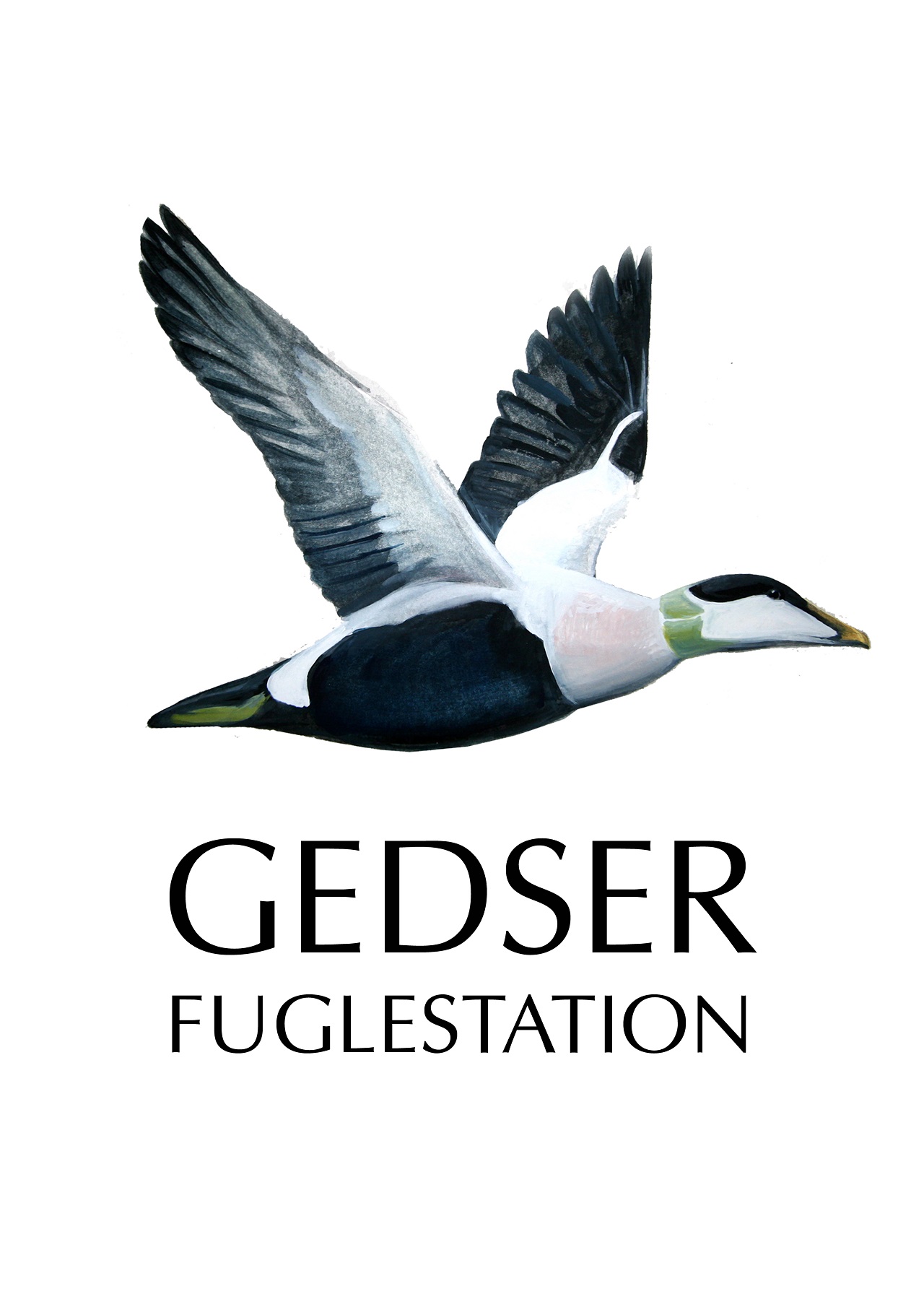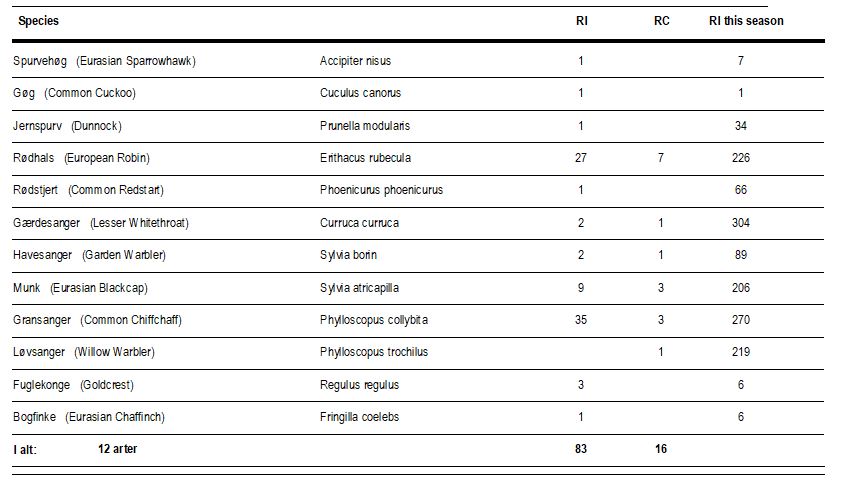Gedser Fuglestation Blog
Her på Gedser Fuglestations blog bringes korte nyheder i dagbogsformat om hændelser på fuglestationen.
The day of the cuckoo
This morning a bit fewer birds but a big surprise: In the closing round, I heard a bird screaming incredible from the Sparrowhawk-net, on Robert's closing round. In the lab, I was amazed when he took a Cuckoo “Gøg” out of the bag. He was delighted as it was a species he had so far always missed in almost 50 years of ringing. Congrats for the new in-hand species!
It was a first calendar-year bird that will probably leave any day now to its wintering grounds in Africa.
I had a male Sparrowhawk “Spurvehøg” today which came right in time as Hans came today to send the cloak samples to the Statens Serum Institute in Copenhagen, so we could offer him one more.
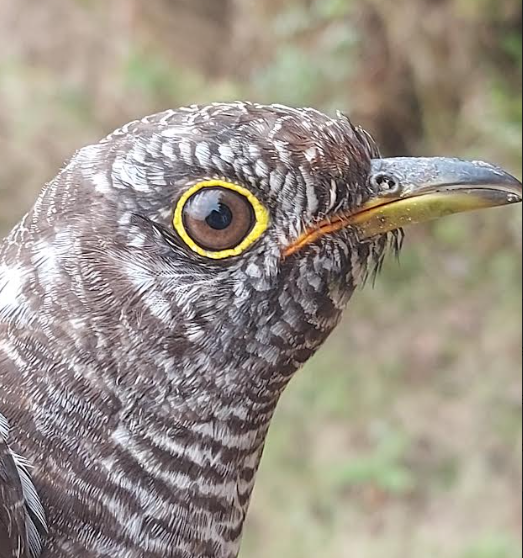
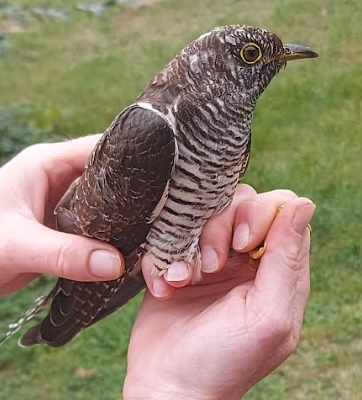
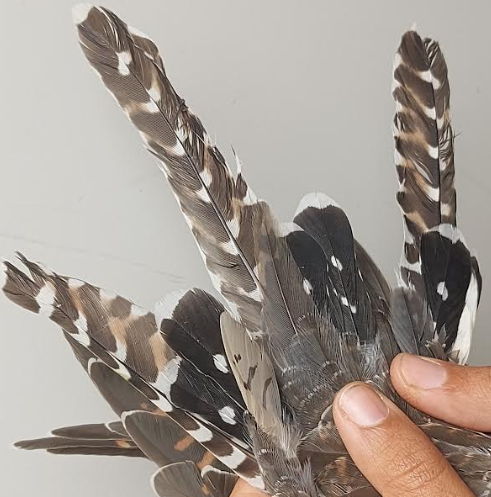
The night was not so cold and it was more cloudy, which resulted in quite a few moths (24 species). We had a few new species for the season: The Box Tree Moth (Buksbomhalvmøl), Clancy's Rystic (Caradrina kadenii , no Danish name) and the Jasmine Moth (Hvidt Halvmøl). The first one is an invasive species from China and Japan.
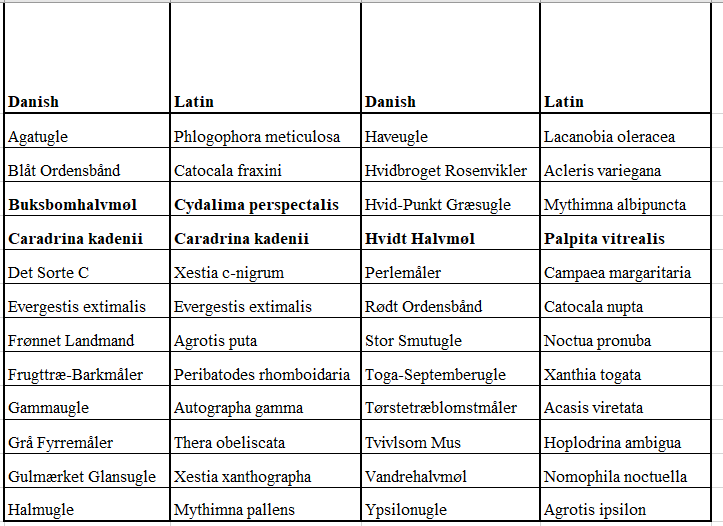
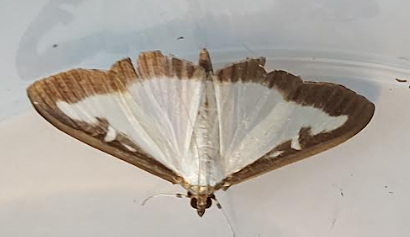
The Box Tree Moth (Buksbomhalvmøl)
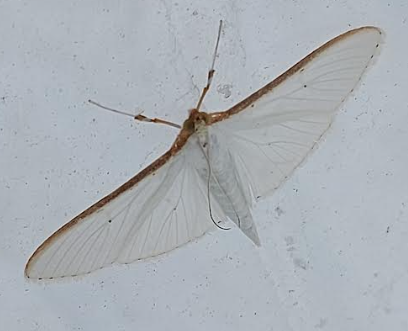
Jasmine Moth (Hvidt Halvmøl)
Migration Count at Gedser Odde
by Lara W
It seems we are developing a trend. Sunday was Scoter/Sortand Day, Monday was Eider/Ederfugl Day, and today was Wigeon/Pibeand Day, with 1069 individuals counted. Most of these were in single-species flocks, although some had a few Teal/Krikand (Anas crecca), Pintail/Spidsand (Anas acuta), and Shoveler/Skeand (Anas clypeata) mixed in.
A few waders and gulls are also starting to migrate; we had 23 Little gull/Dværgmåge (Hydrocoloeus minutus), 6 Common gull/Stormmåge (Larus canus), 1 Great Black-backed gull/Svartbar (Larus marinus), 1 Herring gull/Sølvmåge (Larus argenteus) flying past the point. Mads gave Larissa and I some helpful tips for identifying Little gulls – noting the dark underwing as one of the primary distinguishing features for these birds. We also had a single Common tern/Fjordterne (Sterna hirundo) and 30 Sandwich tern/Splitterne (Thalasseus sandvicensis) migrating today.
Several enjoyable minutes were spent watching a pale-belled Arctic skua/Almindelig Kjove (Stercorarius parasiticus) jinxing its way across the sea. Being relatively close to us, we were able to get close up views of the long central tail feathers which act as a rudder, enabling quick turns and sudden lunges in flight on a surprisingly weighty bird.
Closer to shore, a few species of wader were spotted. 14 Dunlin/Almindelig Ryle (Calidris alpina) and a single Turnstone/Stenvender (Arenaria interpres) embarked on migration, while 5 Sanderling/Sandløber (Calidris alba) and 2 Ringed plover/Stor Præstekrave (Charadrius hiaticular) alighted on the beach. These lovely little birds spent a little time foraging in the shallows, before preening and seemingly having a short nap before flying onwards. I managed to capture a few photographs using Mads’ fantastic camera (see below)!
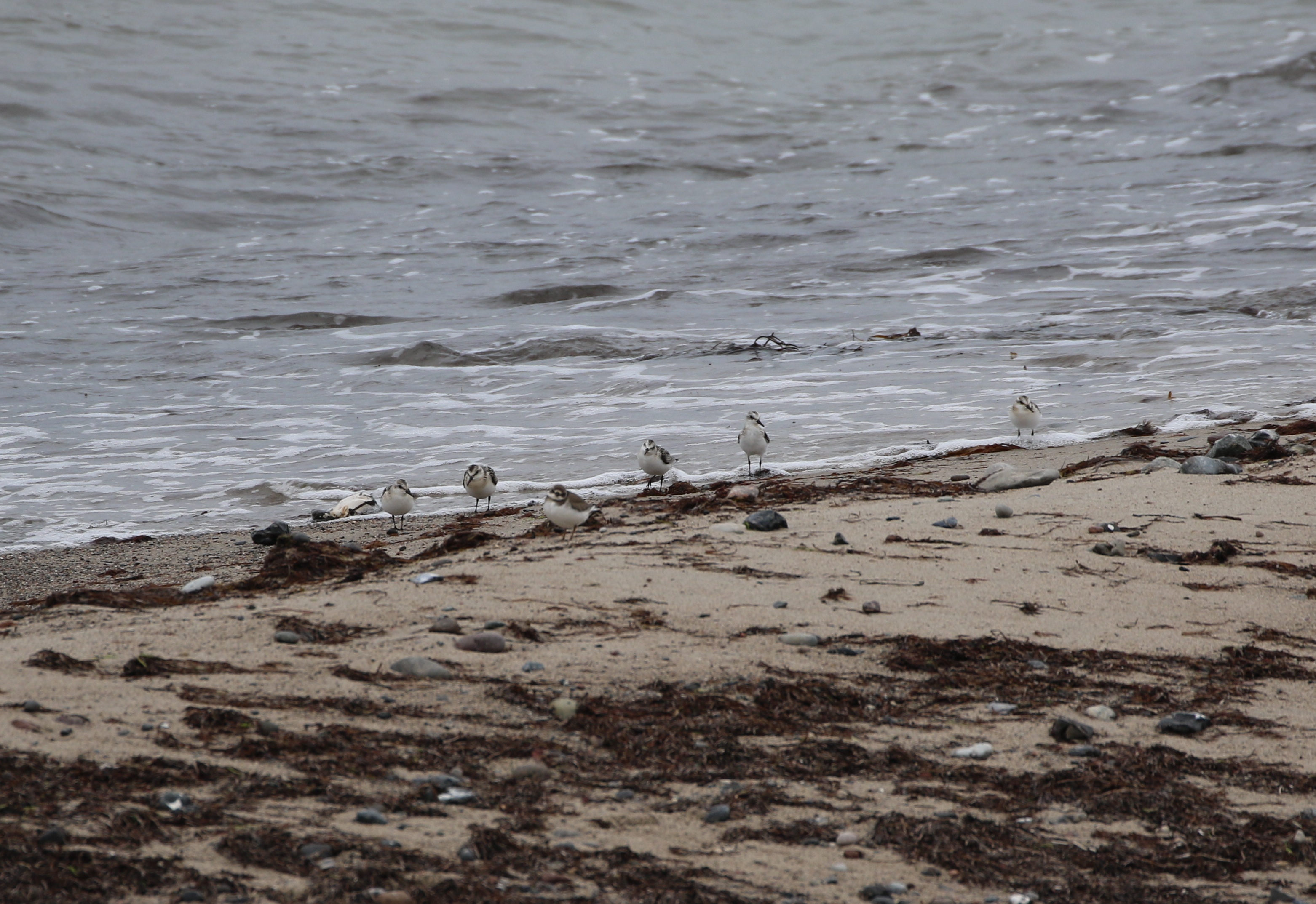
Raptors were rather low on the ground (pun intended, given one Sparrowhawk/Spurvehøg (Accipiter nisus) passed extremely close to our heads), with just 7 Sparrowhawk, 1 Kestrel/Tårnfalk (Falco tinnunculus), and a single Honey Buzzard/Hvepsevåge (Pernis apivorus) passing SW/SV. Most numerous among the passerines were 126 Swallow/Landsvale (Hirundo rustica), although that number may not be representative given our attention was mainly fixed on counting passing seabirds. A single Tree Pipit/Skovpiber (Anthus trivialis) was noted, along with 32 White wagtail/Hvid Vipstjert (Motacilla alba) and 10 House martin/Bysvale (Delichon urbicum). Lastly, we were delighted to spot 4 Black-throated Diver/Sortstrubet Lom (Gavia arctica) passing us. I did manage a photo of one – do please feel free to laugh at my rather blurred attempt as it whizzed by (photo below)! Also pictured is a Harbour porpoise/Marsvin (Phocoena Phocoena) which raised its fin in salute!

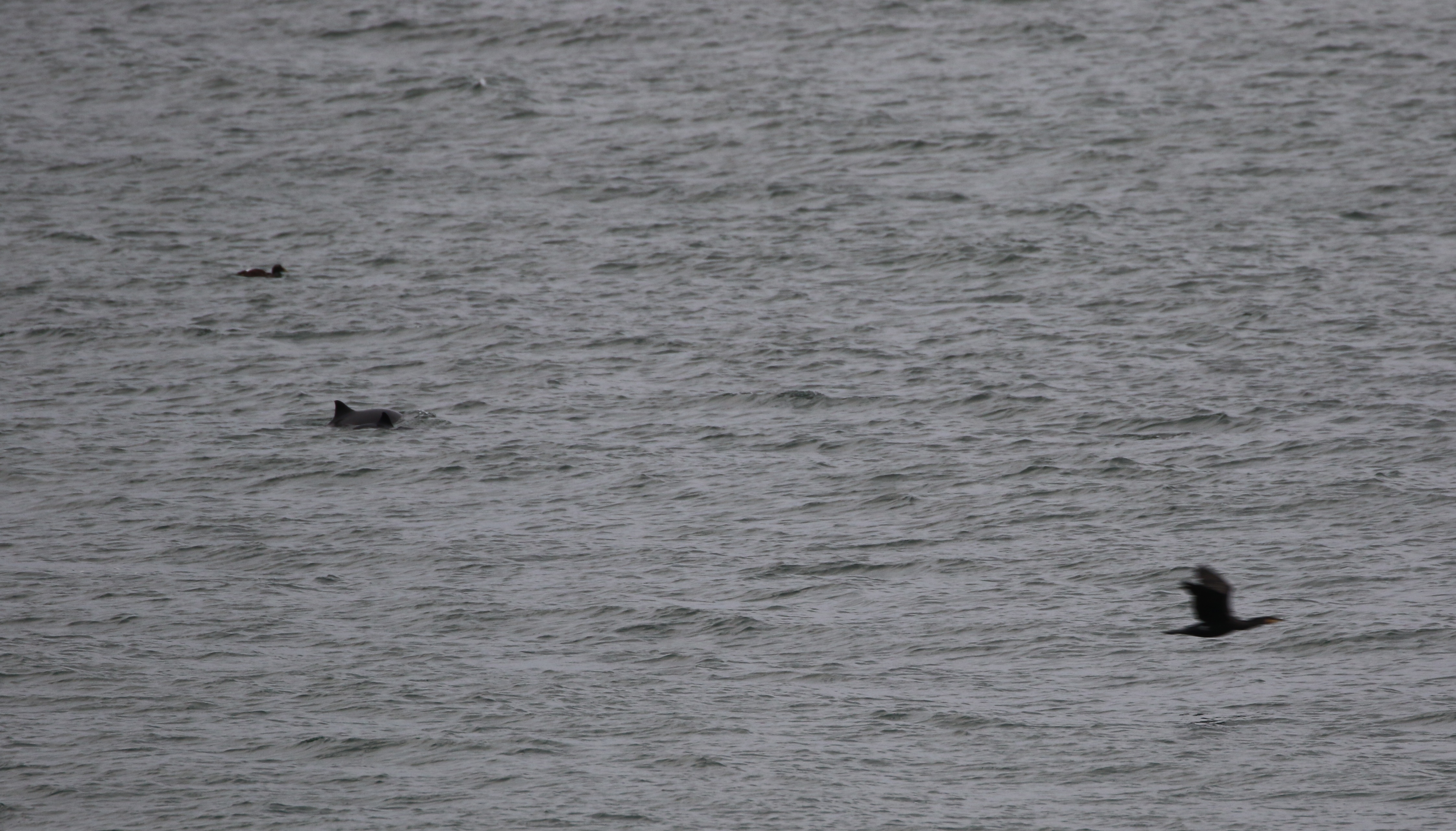
People: Lara Winsloe, Larissa Britton, Robert Luttik, Hanelie Sidhu
